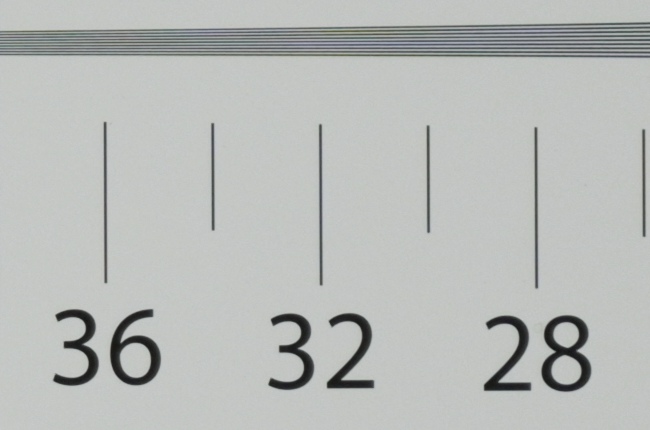Nikon Nikkor Z 28-75 mm f/2.8
4. Image resolution
Let's see how the Nikkor Z 28-75 mm f/2.8 compares; its results, reached in the frame centre and at 28, 45, and 75 mm, presents a graph shown below.

Please Support UsIf you enjoy our reviews and articles, and you want us to continue our work please, support our website by donating through PayPal. The funds are going to be used for paying our editorial team, renting servers, and equipping our testing studio; only that way we will be able to continue providing you interesting content for free. |
- - - - - - - - - - - - - - - - - - - - - - - - - - - - - - - - - - - - - - - - - - - - - - - -
We can say at once that we are very pleasantly surprised by these results. The tested lens provides an excellent image quality already from the maximum relative aperture no matter what focal lenth you employ. What's more, on stopping down the aperture to near f/4.0 it can reach near 80 lpmm, a sensational level for a zoom lens. It's an interesting thing that in this area the 28-75 mm f/2.8 model, cheaper but also easier to construct, is able to outperform its more expensive 24-70 mm f/2.8 brother.
One glance at the edge and you know that in the cheaper model the centre of the frame is clearly the main priority; the rest, though, hasn't been properly taken care of.

The edge of the APS-C/DX sensor shouldn't be a big issue for a lens with such dimensions and yet you can notice here first harbingers of problems. The performance at the shortest focal length doesn't give you any reasons to complain but the maximum aperture at the longer end of the focal spectrum is on the borderline of decency level. At the maximum focal length it seems to fall even a tad below that value. Of course the stopping down of the aperture to near f/3.5 eliminates that problem completely but such a performance plants a seed of uneasiness in our mind.
That seed germinates on the edge of full frame and the graph below shows it very clearly.

The maximum relative aperture provides weak image quality no matter what focal length you employ. In the 28-45 mm range image quality becomes sensible up from f/4.0 but at the maximum focal length it is not enough, you have to close the lens down to at least f/5.6. It seems that only near f/8.0 acceptable image quality is finally within our grasp.
To sum up, in this category the tested lens surprised us two times in a row. Firstly, we didnd't expect such a good performance in the frame centre and, secondly, with such big physical dimensions, we thought there would be more balance between resolution in the frame centre and the edge of the frame. It should be mentioned that the 75 mm focal length is the most problematic on the edge but it's actually a good piece of news. At 75 mm the edge is hardly needed as photographers focus on the frame centre; apart from that the edges are outside depth of field for that setting anyway.
At the end of this chapter, traditionally, we present crops taken from photos of our resolution testing chart. They have been saved as JPEG files along RAW files we used for the analysis above.
| Nikon Z7, JPEG, 28 mm, f/5.6 |
 |
| Nikon Z7, JPEG, 75 mm, f/2.8 |
 |






